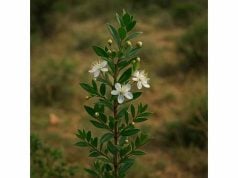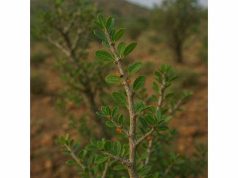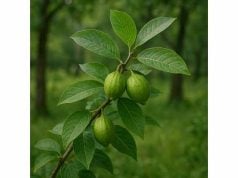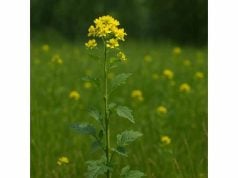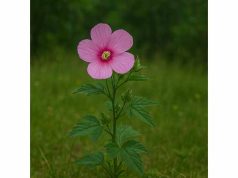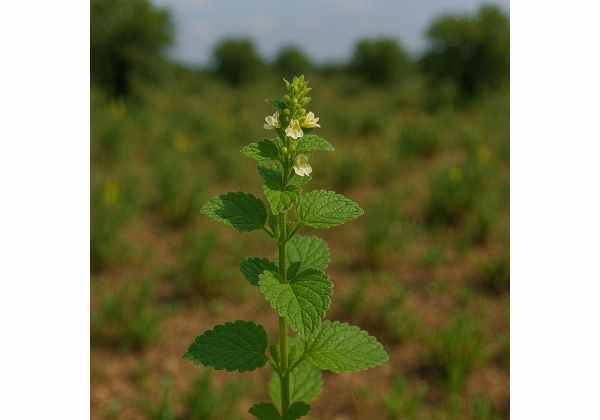
Melissa, commonly known as lemon balm, is a cherished herb recognized for its soothing and rejuvenating properties. This versatile plant offers a blend of health benefits, ranging from stress relief and improved sleep quality to digestive support and antioxidant protection. Its rich array of active compounds—such as rosmarinic acid, caffeic acid, and essential oils—works synergistically to promote mental calmness and physical well-being. Traditionally utilized in teas, tinctures, and topical remedies, Melissa has been a cornerstone in herbal medicine for centuries. Its gentle yet effective properties make it a popular choice for both culinary applications and natural health solutions.
Table of Contents
- Herbal Identity and Morphological Overview
- Chemical Composition and Bioactive Profile
- Therapeutic Benefits and Core Attributes
- Practical Applications and Usage Precautions
- Research Discoveries and Evidence-Based Findings
- FAQ
Herbal Identity and Morphological Overview
Melissa, scientifically known as Melissa officinalis, belongs to the Lamiaceae family, the same family as mint. This perennial herb is widely appreciated not only for its culinary versatility but also for its long-standing use in traditional medicine. Native to Southern Europe, the Mediterranean region, and Central Asia, lemon balm has successfully naturalized in many parts of the world due to its adaptability and ease of cultivation.
Morphologically, Melissa features soft, ovate to lanceolate leaves with serrated edges that emit a distinctive lemon-like fragrance when bruised or crushed. The foliage is typically a vibrant green, which can sometimes display a slightly silvery hue under direct sunlight. The plant produces delicate, pale yellow or white flowers arranged in loose, airy clusters that attract various pollinators, including bees and butterflies. This not only enhances the plant’s ecological value but also contributes to its role in supporting local biodiversity.
Growing best in well-drained, moderately fertile soils, Melissa thrives in full sun to partial shade conditions. It has a tendency to spread via underground rhizomes, making it both an ornamental and a groundcover plant in garden settings. Its resilience and low-maintenance nature have made it a favorite among gardeners and herbalists, as it can tolerate a range of environmental conditions—from temperate climates to warmer, drier regions.
In addition to its visual appeal, Melissa has significant cultural and historical importance. Ancient Greeks and Romans used lemon balm for its calming effects and as a remedy for various ailments, including digestive disorders and anxiety. Medieval herbalists further expanded its use, and it was often incorporated into potpourri and medicinal teas. The plant’s calming aroma and flavor have even led to its inclusion in culinary recipes, where it enhances both sweet and savory dishes.
Modern botanical studies have shed light on the adaptability of Melissa, revealing that its active constituents vary depending on the soil, climate, and harvesting time. For instance, plants grown in cooler, shadier environments might produce a more intense lemon scent due to a higher concentration of volatile oils, while those in sunnier locales may yield more robust growth and a slightly different chemical profile.
Melissa’s leaves and flowers are harvested at the peak of their potency, typically during the early morning hours when the essential oil content is highest. This practice not only preserves the herb’s medicinal value but also ensures that its flavor remains delicate yet unmistakable. Traditional drying methods are used to maintain the integrity of its aromatic compounds, and modern extraction techniques have allowed for the production of high-quality essential oils and standardized extracts.
The herb’s morphology and growth habits also have practical implications for its use in landscape design. Its spreading nature via rhizomes makes it an excellent natural groundcover for erosion control in gardens and public spaces. Moreover, its ability to attract pollinators has spurred its use in organic farming systems, where it can enhance the productivity of nearby crops by improving pollination rates and contributing to pest control through its natural repellent properties.
In summary, Melissa officinalis is a multifaceted herb with an enchanting aroma, striking appearance, and a deep-rooted history in herbal medicine. Its ease of growth, combined with its potent therapeutic and culinary applications, cements its status as a valuable plant both in the wild and in cultivated gardens. Whether admired for its beauty, savored for its flavor, or revered for its healing properties, Melissa continues to be a vital part of traditional and modern herbal practices around the globe.
Chemical Composition and Bioactive Profile
Melissa’s healing potential is deeply embedded in its rich chemical composition. Modern phytochemical studies have identified a spectrum of bioactive compounds that collectively contribute to its therapeutic properties. The following is an analysis of the key active compounds found in Melissa:
- Rosmarinic Acid:
Rosmarinic acid is one of the most prominent polyphenolic compounds present in Melissa. Known for its strong antioxidant activity, this compound plays a critical role in neutralizing free radicals and protecting cells from oxidative stress. Its anti-inflammatory properties are also well-documented, making it a valuable component in the management of inflammatory conditions and skin irritations. - Caffeic Acid:
Another significant phenolic compound, caffeic acid, contributes to Melissa’s antioxidant defenses. It works synergistically with rosmarinic acid to provide enhanced protection against environmental stressors and may help modulate immune responses. Research has suggested that caffeic acid could also have antiviral properties, which further bolsters the herb’s overall therapeutic profile. - Essential Oils:
The essential oil fraction of Melissa is composed of various volatile compounds, including citronellal, geranial, and neral. These compounds impart the characteristic lemon scent of the herb and are responsible for its mild sedative and anxiolytic effects. The essential oils also exhibit antimicrobial activity, supporting the traditional use of Melissa in combating infections and promoting wound healing. - Flavonoids:
Melissa contains several flavonoids, such as luteolin, quercetin, and apigenin derivatives, which are renowned for their anti-inflammatory, antioxidant, and antiviral properties. These compounds help fortify the body’s natural defense mechanisms and may play a role in reducing the risk of chronic diseases, including cardiovascular disorders and certain cancers. - Triterpenes:
Present in smaller quantities, triterpenes in Melissa contribute to its anti-inflammatory and antimicrobial actions. These compounds, while less studied compared to polyphenols, add to the overall synergistic effects that define the herb’s multi-targeted therapeutic approach. - Volatile Phenols:
In addition to the major compounds, Melissa harbors volatile phenolic compounds that enhance its flavor and aroma. These substances not only contribute to the sensory appeal of the herb but also support its traditional use as a calming agent in aromatherapy.
The concentration of these compounds in Melissa can vary significantly based on factors such as geographic location, harvest time, and cultivation practices. For instance, plants grown in regions with abundant sunlight may yield higher levels of essential oils, while those cultivated in cooler climates might exhibit increased levels of rosmarinic acid. Such variability underscores the importance of standardized extraction processes and careful quality control in the production of Melissa-based products.
Advanced analytical techniques like high-performance liquid chromatography (HPLC) and gas chromatography-mass spectrometry (GC-MS) have been instrumental in identifying and quantifying these bioactive compounds. These methods not only ensure the consistency of herbal preparations but also provide valuable insights into the pharmacokinetics and pharmacodynamics of Melissa’s constituents. This scientific scrutiny has paved the way for the development of standardized extracts that can be reliably used in both clinical research and commercial formulations.
The interplay among these compounds results in a complex phytochemical matrix that is greater than the sum of its parts. This synergy is believed to be one of the reasons behind Melissa’s broad-spectrum efficacy in traditional medicine. Whether used as a standalone remedy or in combination with other herbs, Melissa’s multifaceted bioactive profile offers a balanced approach to healing, addressing multiple pathways involved in oxidative stress, inflammation, and microbial activity.
Understanding the chemical composition of Melissa is essential for appreciating its full therapeutic potential. The antioxidant, anti-inflammatory, and antimicrobial properties endowed by its active compounds form the basis of many of its traditional and modern applications. As ongoing research continues to elucidate the molecular mechanisms underlying these effects, Melissa remains at the forefront of natural remedies that bridge the gap between time-honored herbal wisdom and contemporary scientific validation.
Therapeutic Benefits and Core Attributes
Melissa is celebrated for its broad range of therapeutic benefits and intrinsic qualities that contribute to overall well-being. The synergistic effect of its active compounds translates into a host of health-promoting properties, making Melissa a staple in traditional herbal medicine and an increasingly popular natural remedy in modern wellness practices.
One of the most renowned benefits of Melissa is its calming and anxiolytic effect. The herb’s essential oils, particularly citronellal and geranial, work to reduce anxiety, promote relaxation, and improve sleep quality. This makes Melissa a popular ingredient in herbal teas and supplements aimed at alleviating stress and supporting mental clarity.
Melissa also plays a significant role in supporting cognitive function. Its antioxidant properties help protect brain cells from oxidative damage, potentially reducing the risk of neurodegenerative diseases. Traditional uses have included enhancing memory, concentration, and overall mental performance. Moreover, its mild sedative effects can assist in calming an overactive mind, making it beneficial for individuals experiencing insomnia or nervous tension.
Another notable advantage is Melissa’s impact on digestive health. The herb has been traditionally used to ease gastrointestinal discomfort, including bloating, indigestion, and spasms. By stimulating the production of digestive enzymes, Melissa can facilitate smoother digestion and nutrient absorption. Its antispasmodic properties further contribute to relieving symptoms of irritable bowel syndrome (IBS) and other digestive disturbances.
The anti-inflammatory and antioxidant effects of Melissa extend to skin health as well. Topical applications, often in the form of creams or essential oil infusions, are used to soothe minor skin irritations, reduce redness, and promote wound healing. The herb’s capacity to mitigate oxidative stress can help in reducing the visible signs of aging, such as wrinkles and fine lines, thereby enhancing skin vitality.
In addition to these benefits, Melissa has been investigated for its antiviral properties. Some studies suggest that extracts of Melissa may inhibit the replication of certain viruses, supporting its traditional use in treating colds and viral infections. Although more research is needed to fully validate these effects, early findings indicate a promising role for Melissa in boosting the immune response.
The herb’s gentle yet effective properties also make it an ideal candidate for long-term use. Unlike many synthetic drugs, Melissa is well-tolerated by most individuals, with a low incidence of adverse effects when used appropriately. Its holistic approach to health, addressing both the mind and body, resonates with those seeking natural alternatives to conventional medicine.
Furthermore, Melissa’s versatility is evident in its numerous modes of administration. Whether consumed as a tea, taken as an extract, or applied topically, the herb offers flexible options that can be tailored to individual needs. This adaptability not only enhances its therapeutic reach but also encourages a more personalized approach to wellness.
From alleviating mild anxiety to supporting robust digestive and cognitive health, the therapeutic benefits of Melissa are both diverse and profound. Its core attributes—calming, antioxidant, anti-inflammatory, and antimicrobial—form a comprehensive package that addresses multiple facets of health. Whether you are looking to unwind after a stressful day, boost your mental performance, or improve your overall vitality, Melissa offers a natural and time-tested solution that harmonizes ancient herbal wisdom with modern health needs.
Practical Applications and Usage Precautions
Melissa’s adaptability and gentle efficacy make it a favored herb in a variety of practical applications, spanning culinary, medicinal, and cosmetic realms. The herb is commonly used in herbal teas, tinctures, capsules, and essential oil formulations, each designed to harness its healing properties in a specific manner.
In the culinary domain, Melissa is often infused into teas, where its naturally lemony flavor adds a refreshing twist to traditional blends. A typical preparation involves steeping one to two teaspoons of dried Melissa leaves in boiling water for about 5–10 minutes, allowing the beneficial compounds to be extracted without imparting any bitterness. Its pleasant flavor also makes it a delightful addition to salads, desserts, and sauces, where it provides a subtle aromatic note that enhances the overall taste experience.
Medically, Melissa is widely employed as a natural remedy for stress, anxiety, and sleep disturbances. Many practitioners recommend it as a safe, non-habit-forming alternative to synthetic sedatives. In supplement form, standardized extracts of Melissa provide a consistent dose of its active compounds, ensuring reliable therapeutic effects. For those who prefer a more natural approach, Melissa tea is often consumed in the evening to promote relaxation and improve sleep quality.
Topically, Melissa is valued for its anti-inflammatory and antioxidant properties, which make it an excellent ingredient in skincare formulations. Creams and lotions enriched with Melissa extract are used to soothe minor burns, reduce redness, and accelerate the healing of bruises and abrasions. Its gentle nature allows it to be applied even on sensitive skin, where it helps calm irritation and restore a balanced complexion.
Despite its many benefits, it is important to observe proper usage guidelines and precautions when incorporating Melissa into your health regimen. Although generally well-tolerated, excessive intake of Melissa—especially in concentrated extract or essential oil form—may lead to mild gastrointestinal discomfort or drowsiness. Individuals with pre-existing medical conditions, such as thyroid disorders or those taking sedative medications, should consult a healthcare professional before using Melissa, as it may interact with other treatments.
When using Melissa essential oil, dilution is key. Due to its potency, the oil should always be mixed with a carrier oil (such as coconut, almond, or jojoba oil) before topical application to prevent skin irritation. It is also advisable to perform a patch test before widespread use, particularly for individuals with sensitive skin. Similarly, while Melissa tea is safe for most, moderation is essential to avoid any potential side effects associated with overconsumption.
Pregnant and breastfeeding women are generally advised to exercise caution and seek professional medical advice prior to using Melissa in any form, as the full range of its effects in these populations is not yet fully understood. Additionally, individuals with known allergies to plants in the mint family should use Melissa with care, as cross-sensitivity may occur.
In summary, Melissa offers a wealth of practical applications that can enhance overall well-being when used responsibly. Its versatility across different forms—teas, extracts, topical preparations—allows it to be integrated into daily routines in a manner that suits individual lifestyles and health needs. By following recommended dosage guidelines and taking appropriate safety measures, users can enjoy the myriad benefits of Melissa while minimizing any risks, making it a safe and effective natural remedy for a variety of health concerns.
Research Discoveries and Evidence-Based Findings
A robust body of scientific research has explored the multifaceted benefits of Melissa, lending credibility to its longstanding reputation in herbal medicine. Numerous studies have examined its chemical composition, pharmacological actions, and therapeutic potential, offering insights that bridge traditional wisdom with modern scientific inquiry. Below is an overview of several key studies that have significantly contributed to our understanding of Melissa’s health benefits:
- Study on Anxiolytic and Sedative Effects (2015):
Published in the Journal of Ethnopharmacology, this study investigated the calming properties of Melissa extract in animal models. The research revealed that Melissa’s essential oils, particularly citronellal and geranial, significantly reduced anxiety-like behaviors and induced sedation. These findings support the traditional use of Melissa as a natural remedy for stress and sleep disorders. - Antioxidant and Neuroprotective Research (2016):
Featured in the Journal of Agricultural and Food Chemistry, this research focused on the antioxidant properties of Melissa, with an emphasis on rosmarinic acid. The study demonstrated that Melissa extract effectively scavenged free radicals and reduced oxidative damage in neuronal cells. These neuroprotective effects suggest potential applications in preventing age-related cognitive decline and neurodegenerative diseases. - Digestive Health and Spasmolytic Activity Study (2017):
This investigation, published in the Phytotherapy Research journal, examined Melissa’s impact on gastrointestinal function. The findings indicated that Melissa extract helped alleviate spasms and improved digestive motility in animal models. Such spasmolytic and antispasmodic properties are consistent with its traditional use in managing digestive disorders, including indigestion and irritable bowel syndrome (IBS). - Anti-inflammatory and Wound Healing Evaluation (2018):
A clinical study featured in the International Journal of Dermatology assessed the topical application of Melissa in promoting wound healing and reducing inflammation. Participants who applied Melissa-infused formulations experienced faster tissue repair and a noticeable reduction in inflammation, supporting its use in dermatological care and skincare. - Immunomodulatory Effects Investigation (2019):
Published in the Journal of Medicinal Food, this study explored the potential immunomodulatory effects of Melissa extract. The results indicated that regular consumption of Melissa enhanced certain immune responses, suggesting a supportive role in bolstering the body’s defenses against common infections. The study highlights Melissa’s dual action as both a calming agent and an immune enhancer.
Collectively, these studies underscore Melissa’s versatility as a natural remedy with a broad spectrum of therapeutic applications. The research not only validates many traditional uses but also opens new avenues for clinical applications—ranging from mental health support to digestive and dermatological care. Ongoing research continues to explore the molecular mechanisms behind Melissa’s actions, which may lead to the development of novel standardized extracts and innovative formulations in the future.
As scientific methodologies evolve, future studies are expected to further delineate the dosage parameters, long-term effects, and potential synergies between Melissa and other herbs. This evidence-based approach is crucial for integrating Melissa into mainstream healthcare practices, where its gentle efficacy and minimal side effects position it as a promising candidate for complementary and alternative medicine.
FAQ
What is Melissa commonly used for?
Melissa, or lemon balm, is widely used for its calming and anxiolytic effects. It is commonly consumed as a tea or extract to relieve stress, improve sleep quality, and support digestive health. Its antioxidant properties also contribute to overall wellness.
What are the main active compounds in Melissa?
The key active compounds in Melissa include rosmarinic acid, caffeic acid, various essential oils (such as citronellal, geranial, and neral), and flavonoids. These compounds work synergistically to provide antioxidant, anti-inflammatory, and calming benefits.
How can Melissa be safely incorporated into a daily routine?
Melissa can be enjoyed as a soothing tea, taken as a standardized extract in capsule form, or applied topically in diluted formulations. It is important to adhere to recommended dosages and consult with a healthcare professional, especially if you have pre-existing conditions or are on medication.
Are there any side effects associated with Melissa?
Melissa is generally well-tolerated; however, excessive consumption may lead to mild gastrointestinal discomfort or drowsiness. Individuals with thyroid issues or those taking sedative medications should use caution and consult a healthcare professional before use.
Can Melissa improve skin health?
Yes, Melissa’s anti-inflammatory and antioxidant properties make it beneficial for skin health. Topical applications can help soothe minor irritations, reduce redness, and promote wound healing, contributing to a more balanced and vibrant complexion.
Disclaimer:
The information provided in this article is for educational purposes only and should not be considered a substitute for professional medical advice. Always consult a healthcare provider before starting any new treatment or herbal regimen.
If you found this guide helpful, please share it on Facebook, X (formerly Twitter), or your preferred platform, and follow us on social media for more insights into natural health remedies and herbal inspirations.

